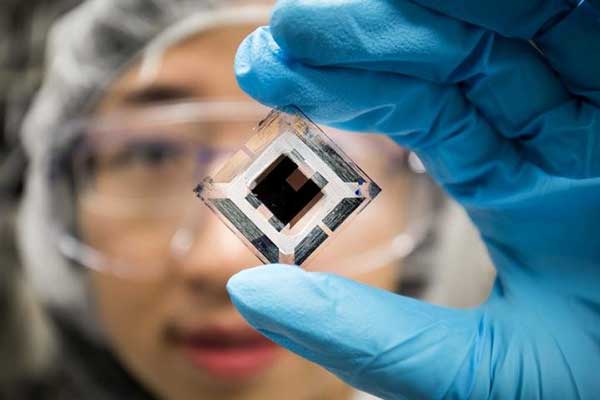In an advance that makes a more flexible, inexpensive type of solar cell commercially viable, University of Michigan researchers have demonstrated organic solar cells that can achieve 15 percent efficiency.
At 15 percent efficiency and given a 20-year lifetime, researchers estimate organic solar cells could produce electricity at a cost of less than 7 cents per kilowatt-hour. In comparison, the average cost of electricity in the U.S. was 10.5 cents per kilowatt-hour in 2017, according to the U.S. Energy Information Administration.
Organic solar cells incorporate carbon into their construction to offer several advantages over conventional “inorganic” cells. Silicon-based inorganic solar panels are costly to make — composed of thick, rigid sheets that require fixed installation points.
But carbon-based organic solar cells could be inexpensively manufactured in rolls that are thin enough to bend and curve around structures or within clothing, and made any color, even transparent, to blend into their environment.
Despite these advantages, organic solar cells have lacked the efficiency required to compete with conventional energy sources.
To break them out of this rut, the researchers combined multiple advancements in design and process.
Despite setting record efficiency, the team believes they can push their progress even further.












Comments